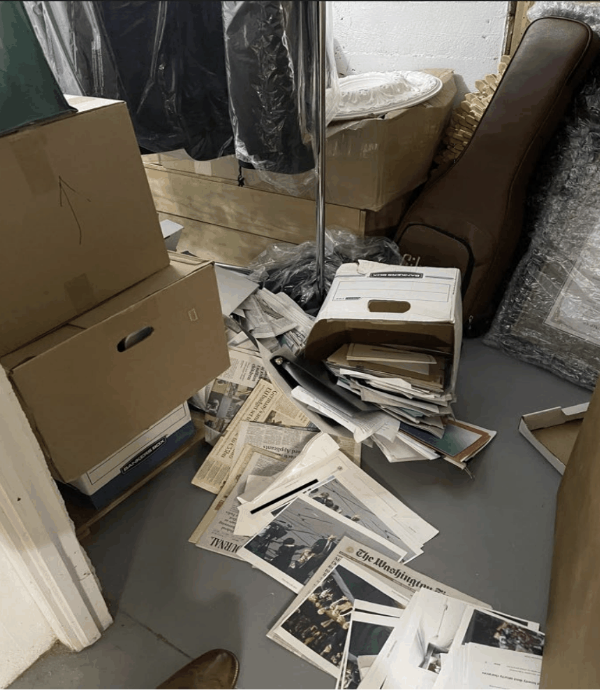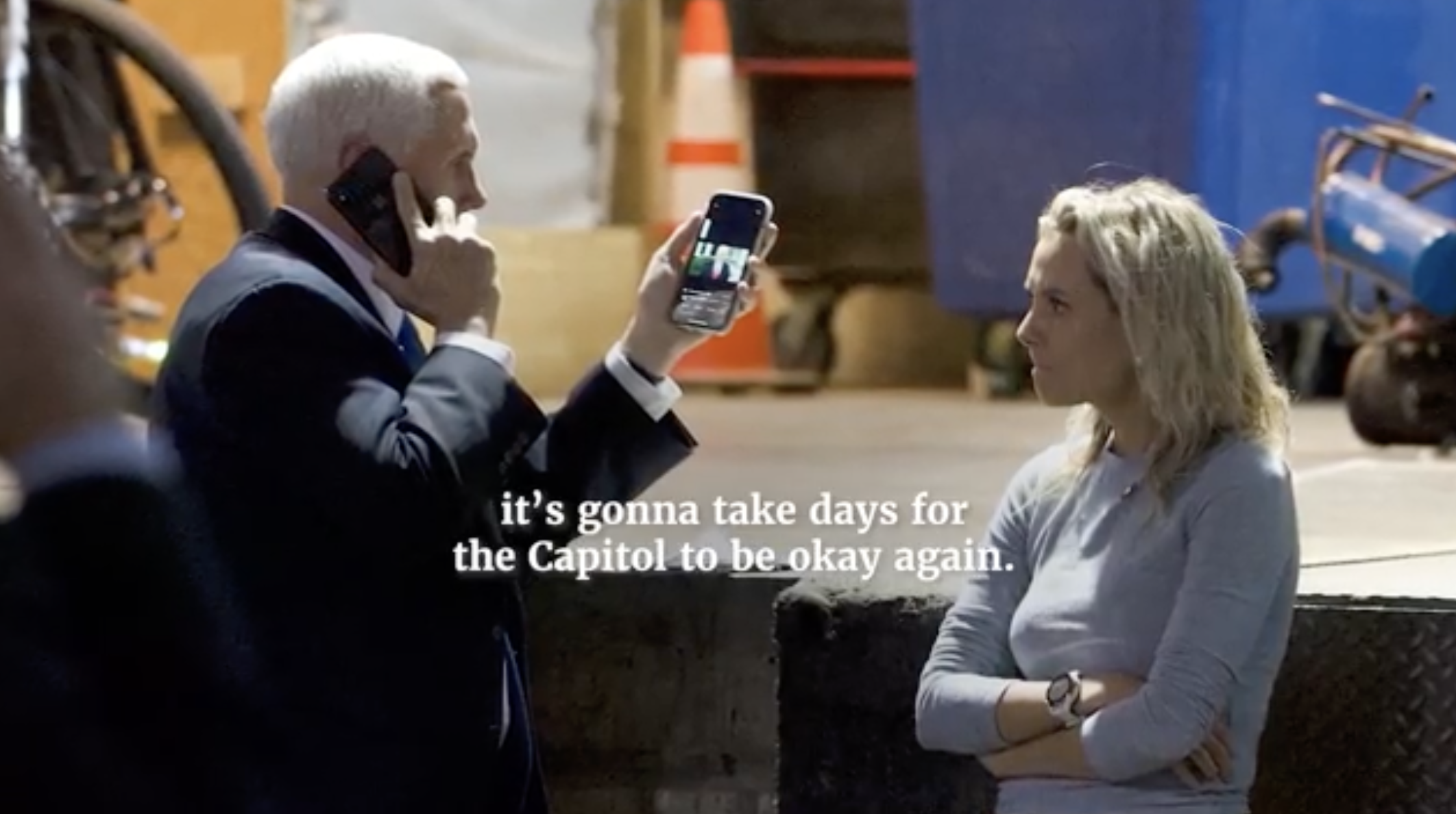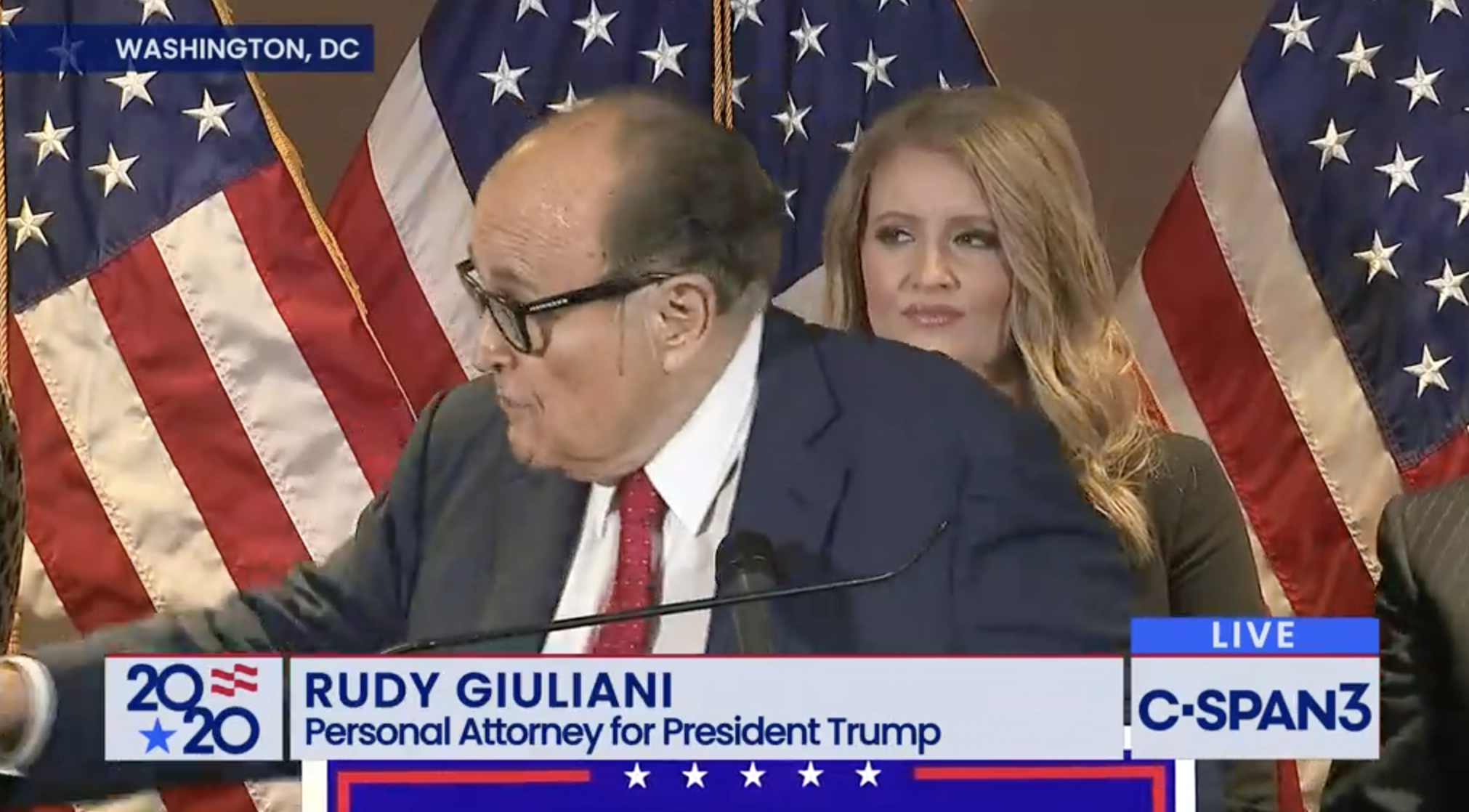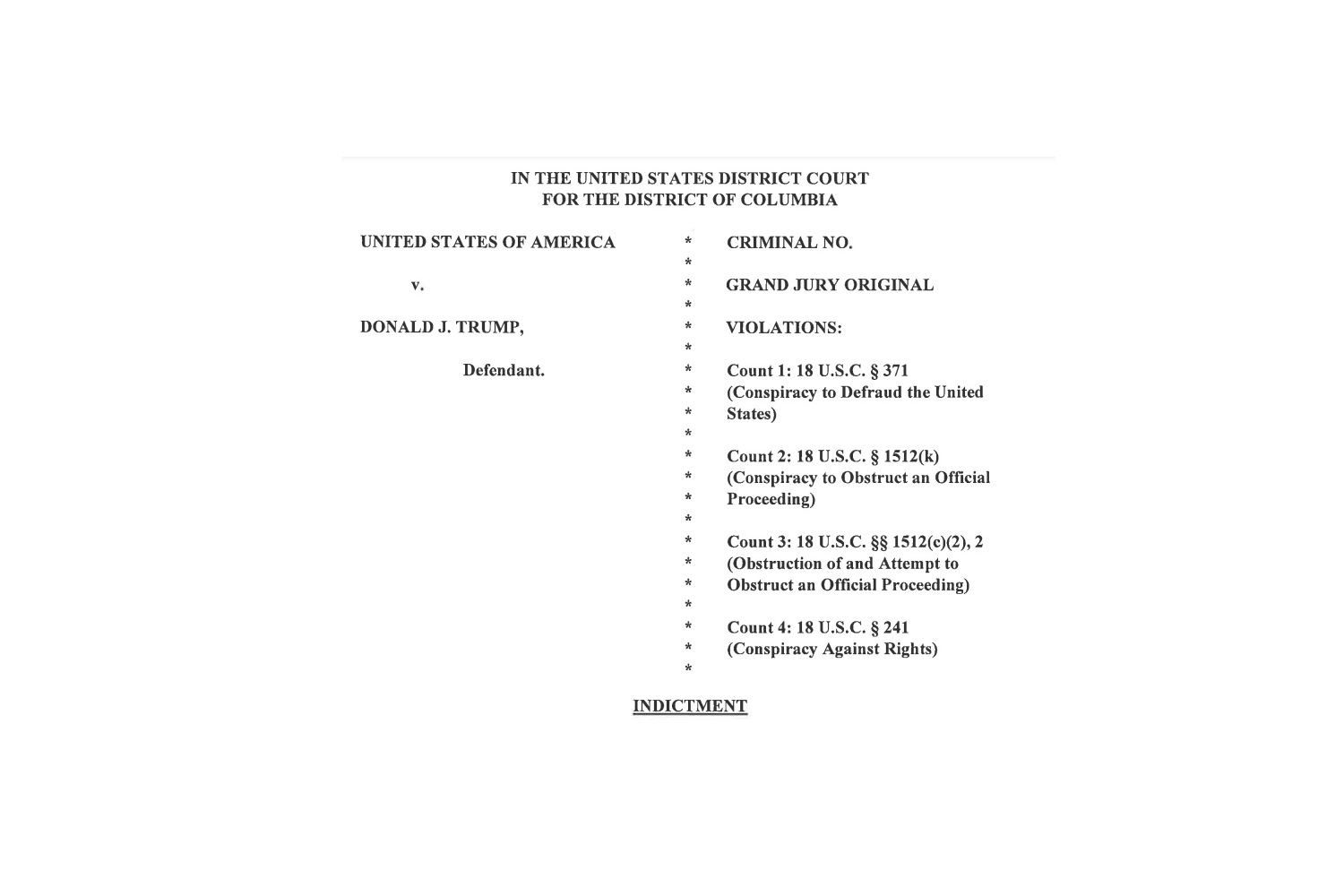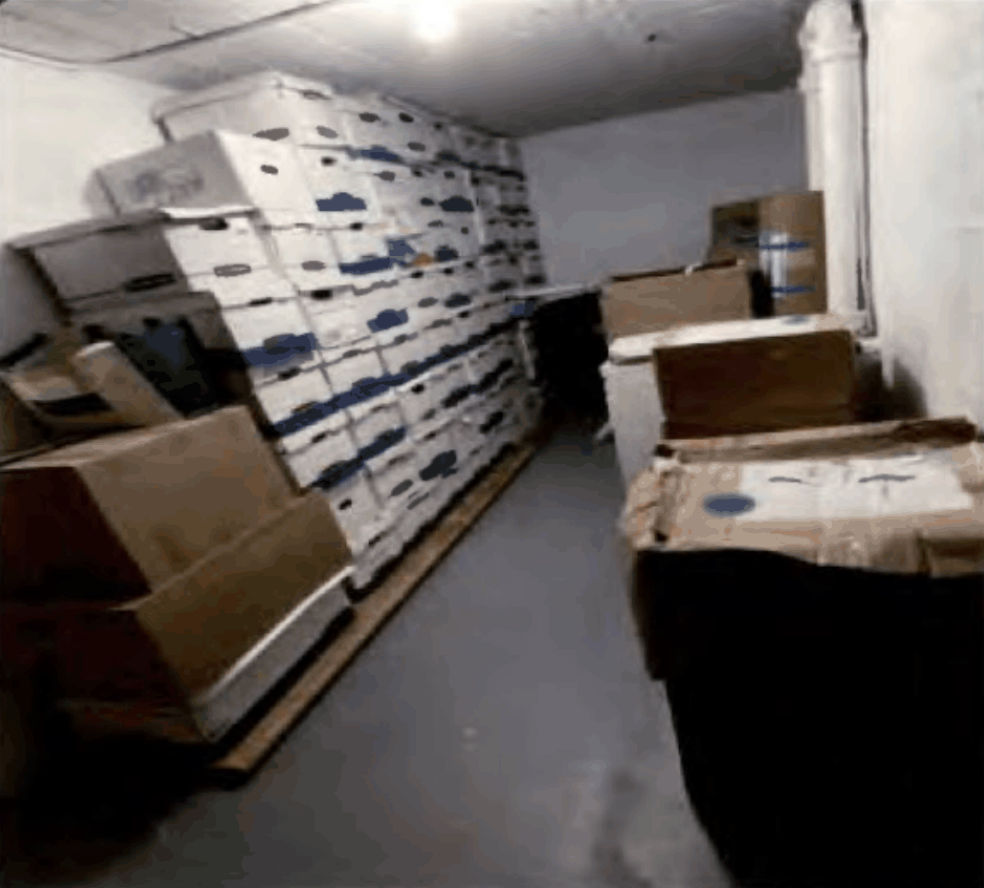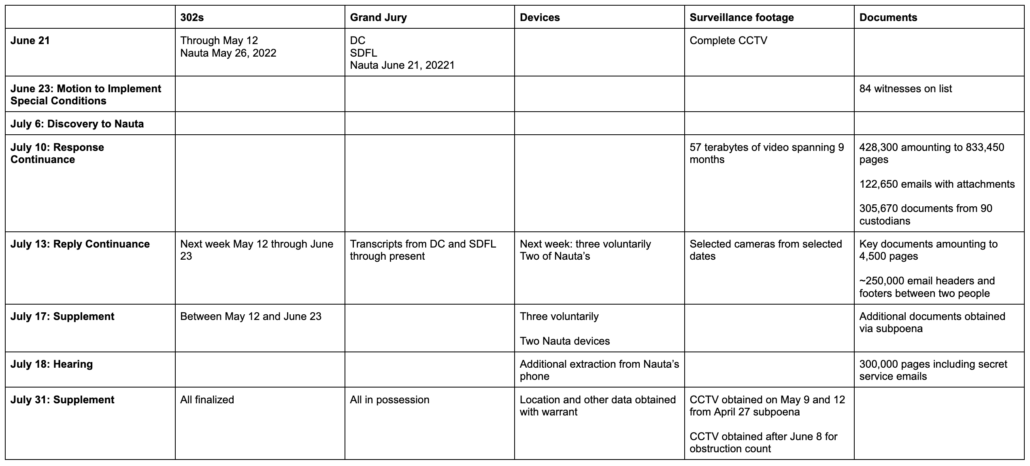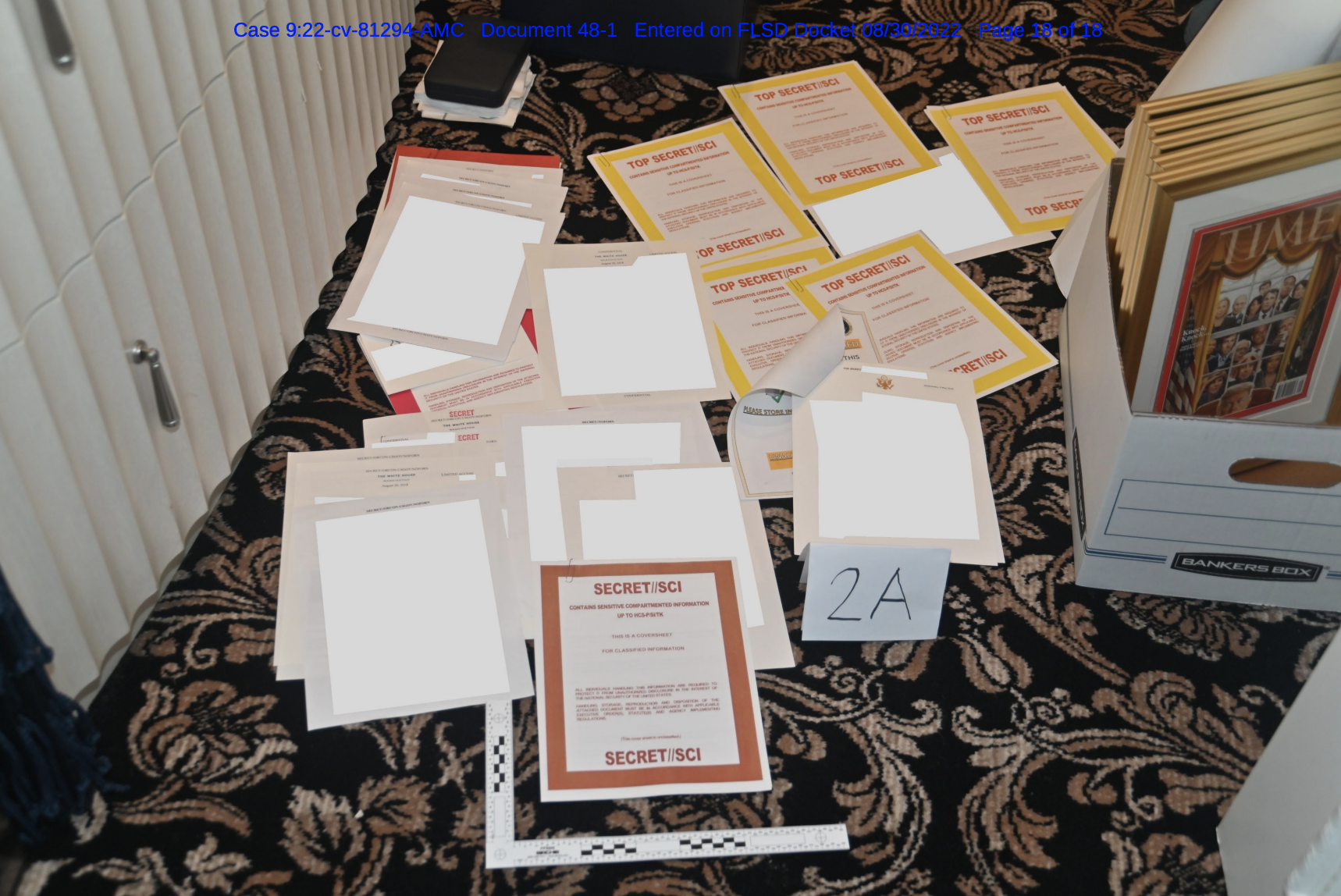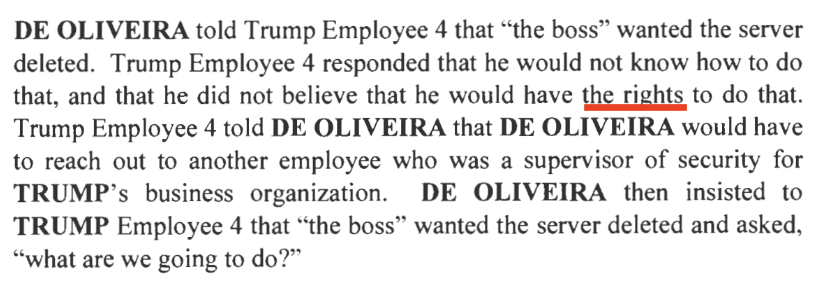In a story demoting Trump’s alleged co-conspirators to “minor characters” and omitting Yuscil Taveras’ reference to “the supervisor of security for TRUMP’s business organization” who could provide him the rights allowing him to delete security footage, NYT states as fact that Trump’s corporate person did turn over the surveillance tapes.
The Trump Organization ultimately turned over the surveillance tapes, and the indictment does not accuse any Mar-a-Lago employees of destroying the footage.
Until I noted it, NYT also reported that Taveras said he didn’t have the “right,” as opposed to “rights” to do so.
NYT is not the only outlet making this conclusion, noting that prosecutors obtained video and so concluding that Trump must have turned it over.
Such conclusions are wildly premature.
Trump, certainly, is making the claim.

But Trump’s tweet includes one demonstrable falsehood: any video turned over was compelled via subpoena, not handed over voluntarily (this repeats a false claim Trump made last summer about voluntarily turning over early tranches of documents). And Trump’s claim that he “never told anybody to delete them” conflicts with Taveras’ testimony about Carlos De Oliveira’s instruction, that “‘the boss’ wanted the server deleted.”
So, even ignoring he’s a pathological liar, there’s no reason we should credit Trump’s claim the tapes (at least some parts of them) were not deleted.
It is true that the current indictment does not yet charge Trump and his corporate person with deleting video. It is also true that the indictment stops at 3:55PM on June 27, 2022, more than a week before some surveillance footage was turned over on July 6, 2022. We only know part of what happened during the first five days after Trump Org was alerted to the subpoena. That leaves a lot of time for shenanigans.
There’s a lot of this story that prosecutors have not yet told.
Even in what prosecutors have revealed so far, it is clear Trump’s initial subpoena response fell short of complying with the subpoena, though there may be reasonable explanations for that. DOJ had subpoenaed five months of footage, from January 10 through the date of subpoena, June 24 (which would have captured the days leading up to Trump’s return of 15 boxes in January 2022). But Trump Org only provided footage from April 23 through June 24.
That’s a curious length of time: 62 days. It suggests Trump Org normally deletes surveillance footage after 60 days, not the 45 days Taveras believed they kept. But if that’s the case, to have 62 days of footage, Trump Org started preserving footage when Jay Bratt first alerted them to the subpoena on June 22. Importantly, if Trump Org’s surveillance footage is automatically written over after 60 days, then someone would have had to take action to start preserving it on June 22 for April 23 and 24 to have been included. That action would have happened before (at least as portrayed in the superseding indictment) anyone spoke to Taveras at Mar-a-Lago. Probably, then, that action occurred in New York.
More suspect is Trump’s failure to provide video footage of all the locations subpoenaed.
There’s a redaction in the citation of the subpoena in the warrant affidavit where it describes the locations requested.

It was never clear before last week whether the redaction hid another subpoenaed location. But the superseding indictment describes that the subpoena asked for footage from “certain locations,” plural, one of which was the basement hallway.
The search affidavit describes that the disk provided on July 6 included footage only from four cameras in the basement hallway. Here, too, though, there could be a reasonable explanation: it may be Mar-a-Lago simply didn’t have cameras in the other requested positions. There’s another redaction in the search affidavit that might provide that explanation.
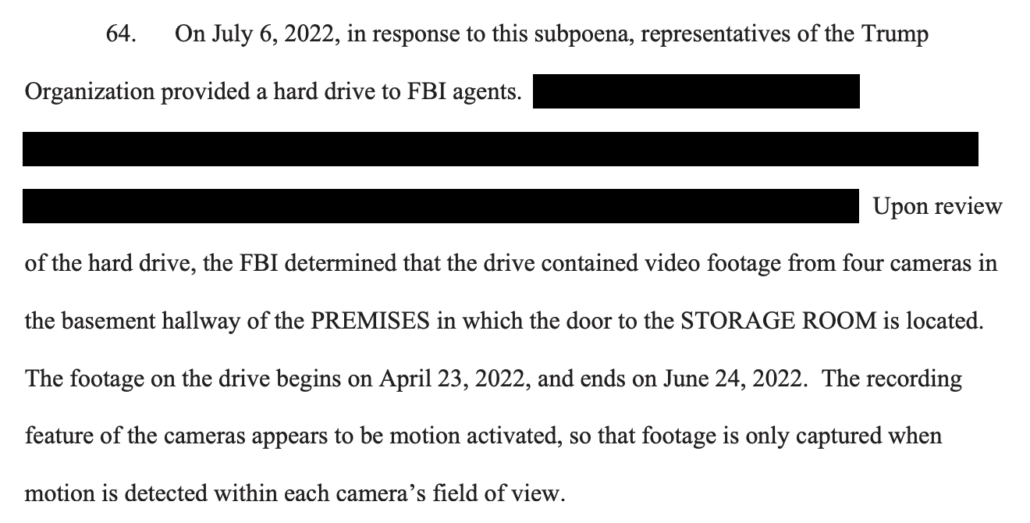
Certainly, when Walt Nauta and De Oliveira scouted out surveillance cameras with a flashlight on June 25, they’re only described as doing so in the basement hallway.
Many outlets are concluding that Trump Org must have turned over everything from that hallway since the search affidavit relied heavily on security footage to describe Nauta (then referred to as Witness 5) moving in and out of the storage room. But even that may overstate things. As I noted, there’s one movement of boxes that appears in the indictment but does not appear in the search affidavit: When Nauta entered the storage room on May 22, spent 34 minutes in there, and then left carrying a single box.
53. On May 22, 2022, NAUTA entered the Storage Room at 3:47 p.m. and left approximately 34 minutes later, carrying one of TRUMP’s boxes.
This is not proof that the footage wasn’t on the disk turned over on July 6. Perhaps the FBI wasn’t all that interested in this single box retrieval and so didn’t include it in the search affidavit. But it is a piece of footage the prosecutors may have obtained later, perhaps via other means.
This was only the first subpoena for video, however. Earlier this year, CNN described follow-up subpoenas after the August search, followed later by a preservation request before De Oliveira flooded the server room in October. The second subpoena, which may have been an attempt to learn when and how the remainder of the boxes were moved back into the storage closet, where they were found on August 8, might have obtained the footage of De Oliveira and Nauta scouting out the surveillance cameras. Once the FBI saw that, I’m sure they scrutinized what they had obtained far more closely, if they hadn’t already.
But there must be more than that: some weeks ago, the defense said they had received “approximately nine months” of surveillance footage.
The initial production also included some 57 terabytes of compressed raw CCTV footage (so far there is approximately nine months of CCTV footage, but the final number is not yet certain).
If DOJ never got footage before April, they may have footage from some part of every month through December, when the last known search occurred (and if DOJ got a video of the search conducted at Bedminster, it may explain why the FBI hasn’t conducted their own search).
Importantly, defense attorneys don’t know how much surveillance footage they’ll eventually get. If all of it was coming from Trump Org, they would. (Though even the superseding indictment appears to rely on surveillance footage, capturing Nauta and De Oliveira in bushes just off Mar-a-Lago property, that could have come from a neighboring property owner.)
That’s why NYT’s earlier reporting may indicate that Trump Org didn’t “ultimately turn[] over all the surveillance tapes.” As NYT reported in May, DOJ also subpoenaed the software company that handles Trump’s surveillance footage.
But hoping to understand why some of the footage from the storage camera appears to be missing or unavailable — and whether that was a technological issue or something else — the prosecutors subpoenaed the software company that handles all of the surveillance footage for the Trump Organization, including at Mar-a-Lago.
Once DOJ identified suspected gaps they would do what DOJ does in all criminal investigations: find another source.
Especially when dealing with an entity, Trump Org, that in recent years had what the Senate Intelligence Committee described as “known deficiencies in [] document responses.”
When SSCI subpoenaed Trump Org for any documents showing ties between the campaign and Russia in 2016, Trump’s corporate person didn’t turn over everything. For example, they didn’t turn over (to Congress at least) an email from Paul Manafort describing how to “secure the victory,” predicting that Hillary “would respond to a loss by ‘mov[ing] immediately to discredit the [Trump] victory and claim voter fraud and cyber-fraud, including the claim that the Russians have hacked into the voting machines and tampered with the results'” — precisely the strategy Trump used in 2020, albeit with the true statement that Russia was tampering with election facilities, though not the vote tallies.
I keep coming back to this, but one of those deficiencies — one of the things Trump Org didn’t provide in 2017, at least to the two congressional committees investigating Trump’s ties to Russia — were the emails showing that Michael Cohen directly contacted the Kremlin in January 2016 and got a response from Dmitri Peskov’s assistant. Mueller got a copy of it, though. He cited it in the report.
On January 20, 2016, Cohen received an email from Elena Poliakova, Peskov’s personal assistant. Writing from her personal email account, Poliakova stated that she had been trying to reach Cohen and asked that he call her on the personal number that she provided.350
There’s a ready explanation for how Mueller got an email showing that Trump’s fixer was in direct contact with the Kremlin during the election when it wasn’t included in Trump Org’s subpoena responses, at least to Congress: because on August 1, 2017, Mueller obtained Cohen’s Trump Org emails using a warrant served on Microsoft.
At least in 2017, as laid out in the warrant affidavit, Microsoft was the enterprise provider for Trump Org’s email.
55. On or about July 20,2017 and again on or about July 25, 2017, in response to a grand jury subpoena, Microsoft confirmed that the Target Account was an active account associated with the domain trumporg.com. Microsoft also provided records indicating that email accounts associated with the domain “trumporg.com” are being operated on a Microsoft Exchange server. According to publicly available information on Microsoft’s website, Microsoft hosts emails for clients on Microsoft Exchange servers, while allowing customers to use their own domain (as opposed to the publicly available email domains supplied by Microsoft, such as hotmail.com). According to information supplied by Microsoft, the domain trumporg.com continues to operate approximately 150 active email accounts through Microsoft Exchange, meaning that data associated with trumporg.com still exists on Microsoft’s servers.
That meant that, even though Trump Org didn’t turn over those damning emails (and Cohen testified to Congress as if they didn’t exist), Mueller got a copy anyway from the vendor, Microsoft, providing the cloud services to Trump Org.
The same may have happened with Trump’s surveillance footage: DOJ went to a cloud provider to obtain their version of it, without any gaps.
That warrant was, in part, a Foreign Agent warrant, so people in DOJ’s National Security Division working with Jay Bratt likely would have had a heads up. Bratt and Julie Edelstein, both on this investigative team, may well remember Trump Org’s recent, “known deficiencies in [] document responses,” and so knew to look for another source.
If that happened, then Nauta and De Oliveira may have initially testified believing certain events weren’t on surveillance footage turned over to DOJ when DOJ actually had such footage, just like Michael Cohen testified to Congress (and initially, to Mueller) as if those emails didn’t exist.
Here’s a point I keep coming back to. The surveillance footage turned over on July 6 had really damning footage: showing Nauta first emptying then half refilling the storage room. That footage, showing Trump withholding documents from Evan Corcoran’s search, was central to DOJ’s probable cause to obtain the warrant to search Trump’s beach resort on August 8.
If there are or were gaps, they served to hide something still more damning than proof that Trump was playing a shell game with his own attorney.
What we know (and Jay Bratt and Julie Edelstein likely knew when they started this investigation) is that in 2017 during the Russian investigation, all the known “deficiencies in [] document responses” in Trump Org’s subpoena compliance pertained to precisely the thing investigators most feared they would find: Direct ties between Trump and Russia.
Which undoubtedly would have made them all the more determined to fill any real or perceived gaps in Trump Org’s production of surveillance video.
Update: The government reveals it was still obtaining surveillance until recently, pointing to both footage obtained with an April 27 subpoena and footage — it doesn’t say from where — after the June 8 indictment.
Included in Production 3 is additional CCTV footage from The Mar-a-Lago Club that the Government obtained from the Trump Organization on May 9 and May 12, 2023, in response to a grand jury subpoena served on April 27. On July 27, as part of the preparation for the superseding indictment coming later that day and the discovery production for Defendant De Oliveira, the Government learned that this footage had not been processed and uploaded to the platform established for the defense to view the subpoenaed footage. The Government’s representation at the July 18 hearing that all surveillance footage the Government had obtained pre-indictment had been produced was therefore incorrect. See 7/18/2023 Tr. at 8. With this production, which also contains CCTV footage obtained after the original indictment was returned that pertains to the new obstruction allegations in the superseding indictment, the Government has produced all the CCTV footage it obtained during its investigation.
And if there’s a non-public grand jury, then Trump knows about it.
With the completion of Production 3, the Government has also now disclosed all unclassified memorialization of witness interviews finalized by today’s date and all grand jury transcripts in the Government’s possession.

